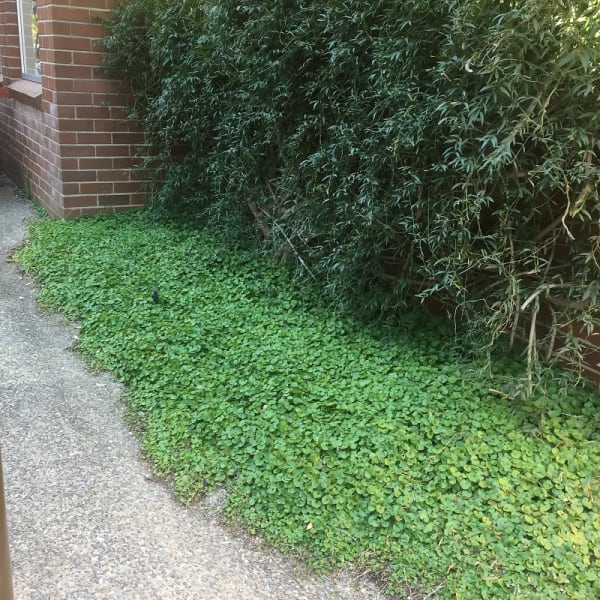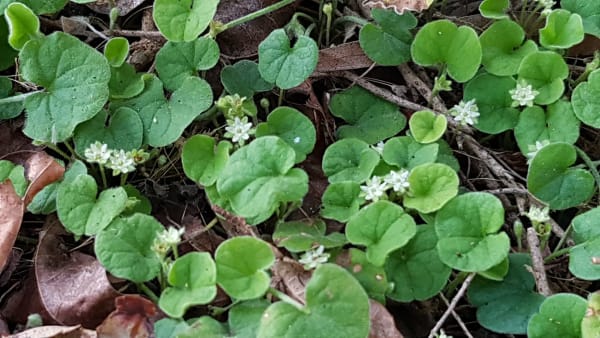Kidney Weed, or Dichondra repens, is a well-known native plant across Australia. I've seen it for sale in nurseries in Perth, Canberra, Sydney and Wollongong. This attests to Dichondra's versatility and ease of cultivation, and it's used as a lawn grass or ground cover in shady and part-shade areas. It can sometimes even hold its own in sunny spots along the escarpment, as long as the soil is moist.
It may be tempting to take this plant for granted, but it's an important element of local ecosystems, and has its own appeal if you look closely enough.

In natural areas, Kidney Weed doesn't generally dominate to this extent, but tends to occur mixed in with a wide range of other ground covers, ferns, climbers and saplings. It grows in a range of situations, including coastal areas, the coastal plain, and along the escarpment, and you're likely to see it on any bushwalk you'd care to do.

Look out for this little ground cover on your wanders, and check out what other species are growing with it. You might see it intertwined with Prickly Rasp Fern (Doodia aspera), Scurvy Weed (Commelina cyanea), Bearded Tylophora (Vincetoxicum barbatum) or Basket Grass (Oplismenus aemulus) among many other species.





